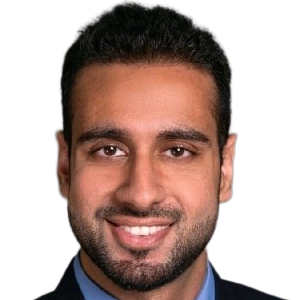Research Group Nils Thuerey
Nils Thuerey
is Professor for Physics-based Simulation at TU Munich.
He works in the field of computer graphics, with a particular emphasis on physics-based deep learning algorithm. One focus of his research targets the simulation of fluid phenomena, such as water and smoke. These simulations find applications as visual effects in computer generated worlds, but also in many fields of engineering. Examples of his work are novel algorithms to make simulations easier to control, to handle detailed surface tension effects, and to increase the amount of turbulent detail.
Recent News @MCML
Publications @MCML
2025
[7]

F. Köhler • N. Thuerey
Neural Emulator Superiority: When Machine Learning for PDEs Surpasses its Training Data.
NeurIPS 2025 - 39th Conference on Neural Information Processing Systems. San Diego, CA, USA, Nov 30-Dec 07, 2025. To be published. URL GitHub
Neural Emulator Superiority: When Machine Learning for PDEs Surpasses its Training Data.
NeurIPS 2025 - 39th Conference on Neural Information Processing Systems. San Diego, CA, USA, Nov 30-Dec 07, 2025. To be published. URL GitHub
[6]

L. Bastian • M. Rashed • N. Navab • T. Birdal
Forecasting Continuous Non-Conservative Dynamical Systems in SO(3).
ICCV 2025 - IEEE/CVF International Conference on Computer Vision. Honolulu, Hawai’i, Oct 19-23, 2025. To be published. Preprint available. Oral Presentation. arXiv
Forecasting Continuous Non-Conservative Dynamical Systems in SO(3).
ICCV 2025 - IEEE/CVF International Conference on Computer Vision. Honolulu, Hawai’i, Oct 19-23, 2025. To be published. Preprint available. Oral Presentation. arXiv
[5]
Q. Xu • J. L. Bamber • N. Thuerey • N. Boers • P. Bates • G. Camps-Valls • Y. Shi • X. Zhu
Physically consistent and uncertainty-aware learning of spatiotemporal dynamics.
Preprint (Oct. 2025). arXiv
Physically consistent and uncertainty-aware learning of spatiotemporal dynamics.
Preprint (Oct. 2025). arXiv
[4]
L. Bastian • M. Rashed • N. Navab • T. Birdal
Continuous-Time SO(3) Forecasting with Savitzky--Golay Neural Controlled Differential Equations.
4DVision @CVPR 2025 - Workshop on 4D Vision: Modeling the Dynamic World at IEEE/CVF Conference on Computer Vision and Pattern Recognition. Nashville, TN, USA, Jun 11-15, 2025. arXiv
Continuous-Time SO(3) Forecasting with Savitzky--Golay Neural Controlled Differential Equations.
4DVision @CVPR 2025 - Workshop on 4D Vision: Modeling the Dynamic World at IEEE/CVF Conference on Computer Vision and Pattern Recognition. Nashville, TN, USA, Jun 11-15, 2025. arXiv
[3]

K. Bhatia • F. Köhler • N. Thuerey
PRDP: Progressively Refined Differentiable Physics.
ICLR 2025 - 13th International Conference on Learning Representations. Singapore, Apr 24-28, 2025. URL
PRDP: Progressively Refined Differentiable Physics.
ICLR 2025 - 13th International Conference on Learning Representations. Singapore, Apr 24-28, 2025. URL
[2]

Y. Shehata • B. Holzschuh • N. Thuerey
Improved Sampling Of Diffusion Models In Fluid Dynamics With Tweedie's Formula.
ICLR 2025 - 13th International Conference on Learning Representations. Singapore, Apr 24-28, 2025. URL
Improved Sampling Of Diffusion Models In Fluid Dynamics With Tweedie's Formula.
ICLR 2025 - 13th International Conference on Learning Representations. Singapore, Apr 24-28, 2025. URL
2024
[1]

F. Köhler • S. Niedermayr • R. Westermann • N. Thuerey
APEBench: A Benchmark for Autoregressive Neural Emulators of PDEs.
NeurIPS 2024 - 38th Conference on Neural Information Processing Systems. Vancouver, Canada, Dec 10-15, 2024. URL GitHub
APEBench: A Benchmark for Autoregressive Neural Emulators of PDEs.
NeurIPS 2024 - 38th Conference on Neural Information Processing Systems. Vancouver, Canada, Dec 10-15, 2024. URL GitHub
©all images: LMU | TUM




